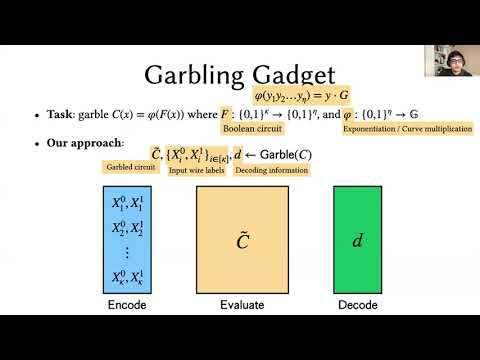Welcome to the resource topic for 2021/1055
Title:
Threshold Schnorr with Stateless Deterministic Signing from Standard Assumptions
Authors: François Garillot, Yashvanth Kondi, Payman Mohassel, Valeria Nikolaenko
Abstract:Schnorr’s signature scheme permits an elegant threshold signing protocol due to its linear signing equation. However each new signature consumes fresh randomness, which can be a major attack vector in practice. Sources of randomness in deployments are frequently either unreliable, or require state continuity, i.e. reliable fresh state resilient to rollbacks. State continuity is a notoriously difficult guarantee to achieve in practice, due to system crashes caused by software errors, malicious actors, or power supply interruptions (Parno et al., S&P '11). This is a non-issue for Schnorr variants such as EdDSA, which is specified to derive nonces deterministically as a function of the message and the secret key. However, it is challenging to translate these benefits to the threshold setting, specifically to construct a threshold Schnorr scheme where signing neither requires parties to consume fresh randomness nor update long-term secret state. In this work, we construct a dishonest majority threshold Schnorr protocol that enables such stateless deterministic nonce derivation using standardized block ciphers. Our core technical ingredients are new tools for the zero-knowledge from garbled circuits (ZKGC) paradigm to aid in verifying correct nonce derivation: - A mechanism based on UC Commitments that allows a prover to commit once to a witness, and prove an unbounded number of statements online with only cheap symmetric key operations. - A garbling gadget to translate intermediate garbled circuit wire labels to arithmetic encodings. Our scheme prioritizes computation cost, with each proof requiring only a small constant number of exponentiations.
ePrint: https://eprint.iacr.org/2021/1055
Talk: https://www.youtube.com/watch?v=QtkwTMamoyQ
See all topics related to this paper.
Feel free to post resources that are related to this paper below.
Example resources include: implementations, explanation materials, talks, slides, links to previous discussions on other websites.
For more information, see the rules for Resource Topics .
